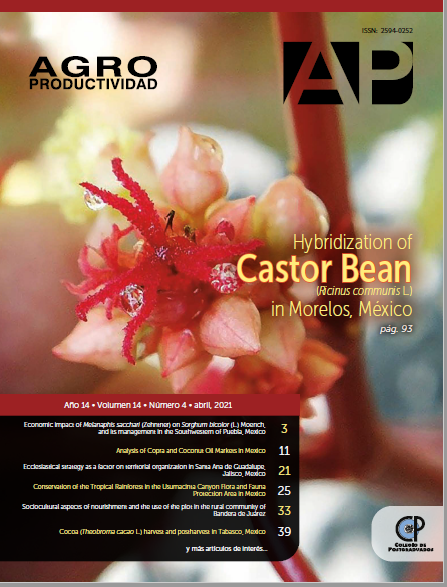Castor hybridization in Morelos (Ricinus communis L.) Castor hybridization
Main Article Content
Keywords
Pollen viability, stigma receptivity, fruits pollinated, hybridization, genetic improvement.
Abstract
Objective: To determine the receptivity of the stigma and the viability of pollen to make manual crosses and obtain viable progeny in castor.
Design/methodology/approach: Pollen viability tests were made on improved materials by staining with aceto carmine solution. In elite materials, the receptivity of the stigma was evaluated with hydrogen peroxide. From the inflorescences, the male ones were removed and the female ones were preserved, which were covered with a glassine bag. After six days, it was reviewed and when it was considered receptive, manual pollinations were carried out between viable pollen materials and receptive stigma. The pollen of the male parent was impregnated in the stigmas and the inflorescence was covered again.
Results: The improved materials presented viable pollen since they were stained red. Whereas, the application of hydrogen peroxide to the stigmas of the elite materials showed a bubbling, indicative that they were receptive. In 2014, 400 inflorescences were pollinated with 8 flowers on average and a fruit pollinated percentage of 61.21. In 2015, 245 inflorescences with 12 flowers on average and 61.24% of fruit were pollinated.
Limitations on study/implications: Temperature and relative humidity were fundamental factors for the success of castor fertilization.
Findings/conclusions: The elite castor materials presented receptive stigmas and the improved viable pollen materials. Manual crosses produced fruits and seeds. The fruits pollinated was 61%.

